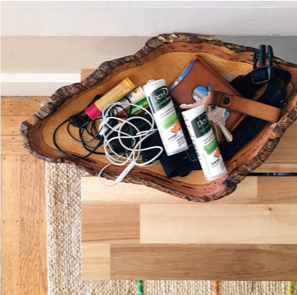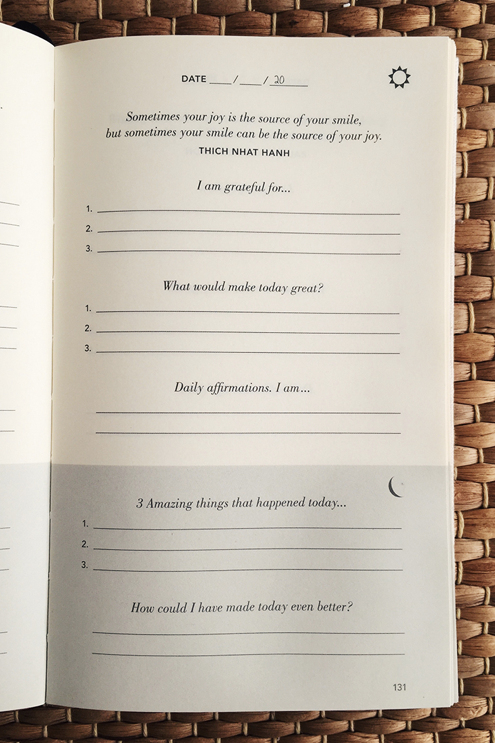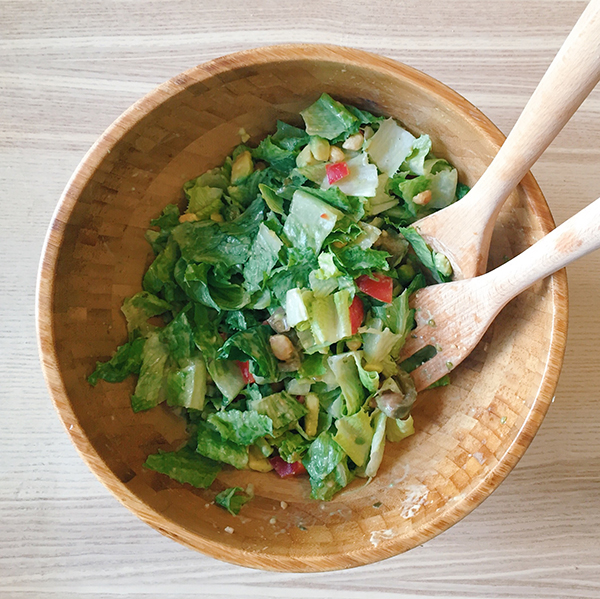How to Change Any Diabetes Habit, Part 1: Environment Beats Self-Control
By Adam Brown
.jpg) By Adam Brown
By Adam Brown
What my new vacuum reminded me about changing my own behavior
We recently bought a new handheld, wireless vacuum to replace a clunky, wired model. Since Priscilla and I have a small apartment, we had always stored the old vacuum in our front closet – begrudgingly lugging it out to use about once a month.
This new vacuum is not only better designed, but came with an awesome wall mount for storage. Priscilla and I – in a stroke of clean-spiration! – decided to hang the new vacuum right in the kitchen, next to our fridge and above the recycling bin (see picture).

Can you guess what happened?
We vacuum about 4-8x more often now – at least 1-2 times per week.
What drove the change in behavior? Certainly the better design of the new vacuum helps – it’s easier to use than the old clunker.
However, I think the bigger explanation is something real estate agents live by: location, location, location. Where something is located drives my behavior, whether I realize it or not.
It is this topic I want to tackle in this column – how my immediate environment is a tremendous tool for changing my behavior. By that, I mean arranging my surroundings to do more of the things I want OR less of the things I want to avoid.
You could call this the vacuum-in-the-kitchen philosophy of behavior change.
The below shares some ways to do this, excerpted from my book, Bright Spots & Landmines (free PDF; $2-$6 at Amazon). In follow-up columns – I have at least four planned – I’ll share other helpful tools for changing diabetes habits. Ultimately, I hope this series makes “behavior change” seem less mysterious, giving you actionable tools to change things today.
 Change my immediate environment to make better choices easier or unhelpful choices harder
Change my immediate environment to make better choices easier or unhelpful choices harder
“Many people have discovered that, when it comes to changing their own behavior, environmental tweaks beat self-control every time.”
– Chip and Dan Heath in Switch
Assuming I have infallible willpower and infinite motivation is never a good strategy – I prove myself wrong time and time again.
One of my favorite Mindset Bright Spots takes advantage of my immediate surroundings, which have a big, but hidden, impact on my diabetes choices. My goal is always to structure my environment so that my Bright Spots happen more often and more automatically – no willpower needed (ideally).
How can I set up my environment to make the right choices easier or make the wrong choices harder? Here are some examples I’ve used successfully:
Bright Spot Choice Easier
-
Storing glucose tablets everywhere in my life: making my go-to, automatic hypoglycemia correction available everywhere prevents a hypoglycemia binge.

-
Placing my glucose meter next to my bed so I always check when I wake up and before sleep.

-
Putting my Five Minute Journal on the kitchen table (AM) and nightstand (PM) – I always fill it out while I drink tea in the morning and right before bed.

- Using smaller dinner plates so I eat less food (8 inches across).
- Using an enormous salad bowl (the size of my head) so I automatically eat more veggies.
.jpg)

-
Keeping nuts and seeds in jars in the pantry cupboard, instead of placing them out in the open on the kitchen counter. I will overeat nuts if they are highly visible, especially when I’m not even hungry.
.jpg) Landmine Choice Harder
Landmine Choice Harder
-
No crackers/chips/candy in the house, or at minimum, hidden from sight. If junk food is really hard or impossible to access, it will be harder to eat.
-
Filling up on green tea made in a huge French press – more liquid in my stomach means less desire to overeat.
-
Filling up on vegetables, sparkling water, and/or broth at dinner so I’m less likely to overeat.
-
In restaurants, ask the waiter not to serve me the bread, rice, or pasta, substituting vegetables instead.
-
Unplugging and storing our small projector and video games in a crate, so when I want to play or watch, I have to take 7 minutes to set everything up.
-
Putting my phone in Airplane mode (no wifi either) from 9pm-9am, reducing the barrage of notifications and wasted time on the phone.
I love that these environment changes are small but can meaningfully impact my behavior and “save me from myself.”
We all use environment tweaks already for every day, mundane things: storing car keys or a wallet in the same place (easier to find, less likely to lose), placing an umbrella by the front door when rain is expected tomorrow, and even automatic bill payment.
For me, the fun part of this Bright Spot has been trying many different experiments. Where should things be placed in the house as reminders? Can I try different daily schedules and see what impact it has on my behavior?
“What is the “automatic bill pay” environment tweak that will help me “exercise more often?”
It might be setting up a home gym, parking farther from the office, taking the stairs whenever possible, or putting my bike next to the front door – the possibilities are endless, and when I pick the right option(s), my BGs and mental outlook often improve too.
There is no one-size-fits-all environment change, but there is immense variety here, it doesn’t take much to change my behavior, and many approaches don’t cost anything.

Analyze my environment and behavior like a detective: when I make the right choices, what in my surroundings enabled that? When I make the wrong choices, what could I have done differently to setup my immediate environment?
Run personal experiments with different routines, object placement, behavioral cues, etc. Keep asking, “Did this change make the right choice easier or the wrong choices harder?”
*
“One of the best books I’ve ever read… it has helped me…as much as my insulin or blood glucose reader has. I couldn’t begin to exaggerate the reasons to read this…”- Gabriel Guile, 5-star Amazon Review of Bright Spots & Landmines. If you don’t have your copy yet, get it here for free or name-your-own-donation! You can also purchase it in paperback ($6) or on Kindle ($1.99). All proceeds benefit The diaTribe Foundation, a 501(c)(3) non-profit.







